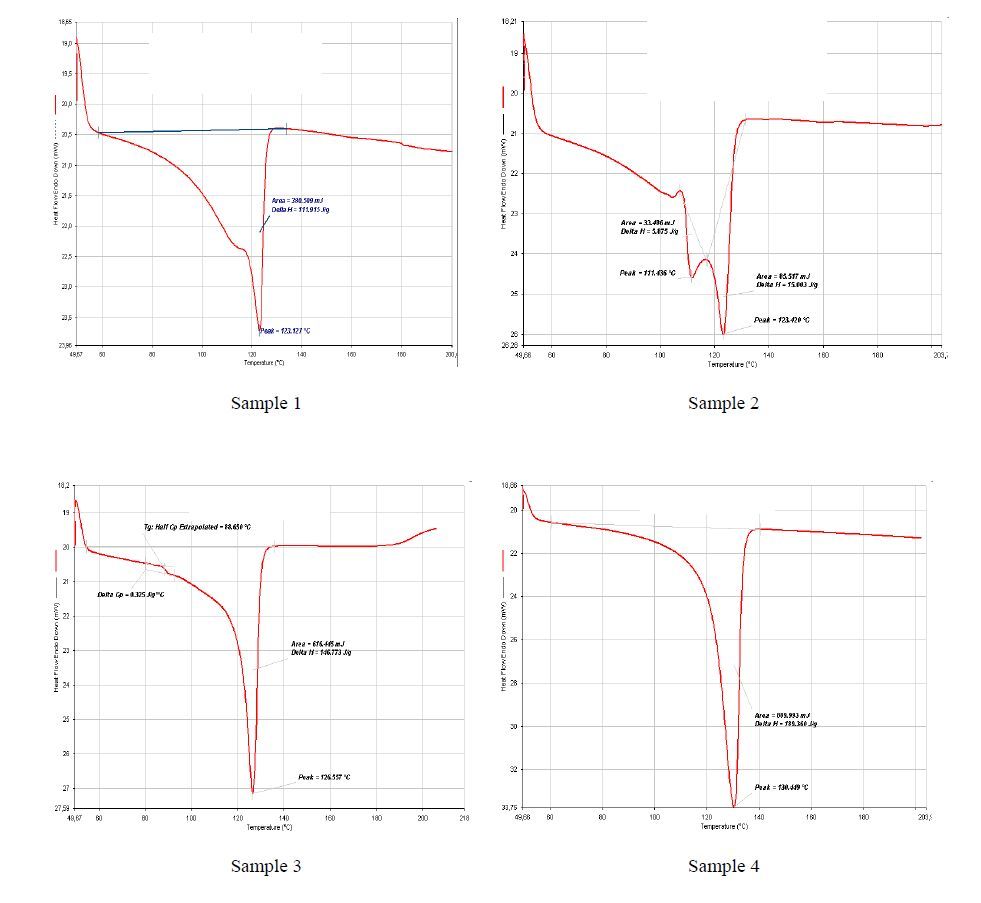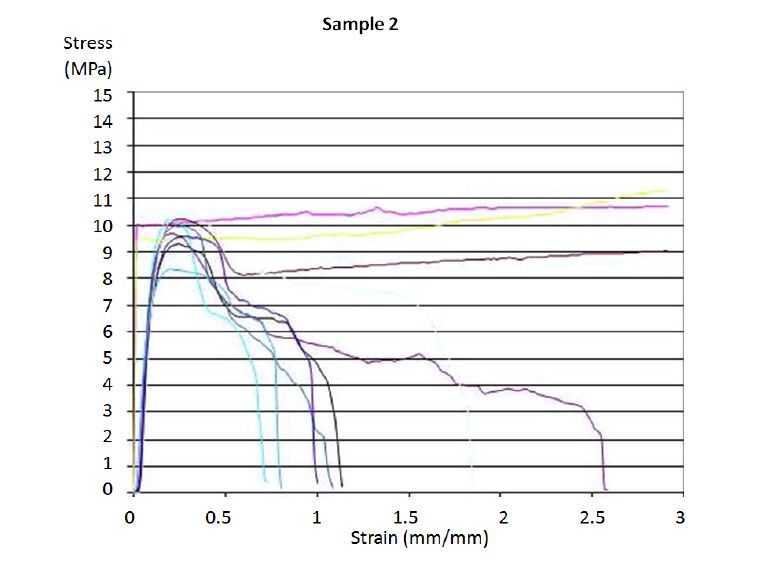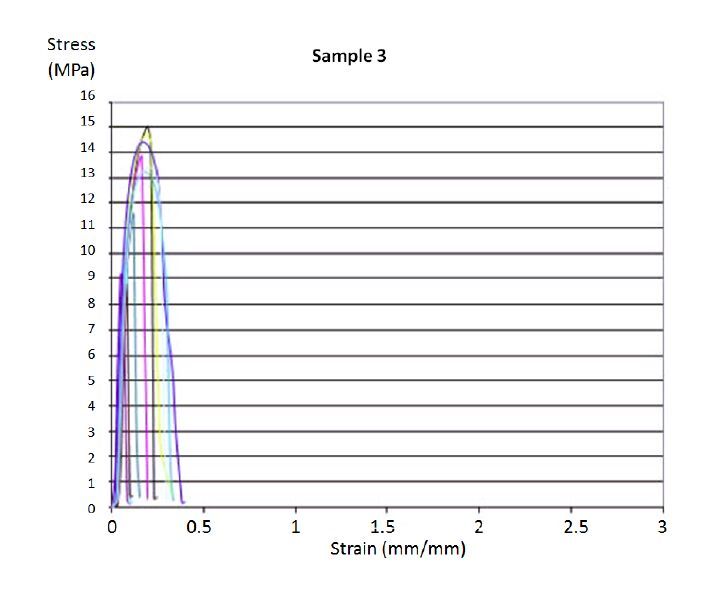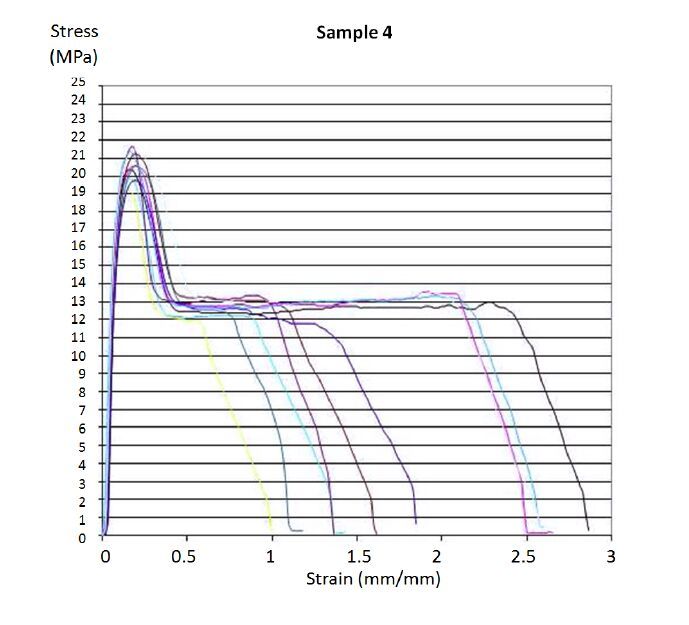1. Introduction
Plastics are omnipresent in modern life because they are an integral part of a majority of consumer goods. It is estimated that 297.5 million tons of plastic materials will be consumed in
2015 [1]. With the increasing trend in plastics consumption; it is important to plan their recycle and recovery in order to attain a sustainable and responsible use of resources [2]. This takes greater relevance, considering that 50% of consumer plastics are for single-use disposable applications; this in turn aggravates the waste build-up in landfills. It is important to underline that 4% of oil production is used as raw material for plastics manufacture, which needs an additional 3-4% expense in energy, this is a real waste of world resources when considering that a majority of plastics are used for a single application [3] and then landfilled, as mentioned before. A possible solution is that of Seliger [4] who have proposed a new definition of design-for-recycling, in an integrated approach in which both the product features and processes are better designed to reuse these materials. Particularly, Huang [5] reports that while there is an interest in using used plastics as a pavement aggregate there are still hurdles to this kind of applications. A step forward in recycling is that mentioned by Huang [6] who point out to the European Union where there are strict legal regulations to reduce plastic waste build-up, particularly from the automobile industry.
Ecological activism and industrial interest have a role in the adoption of recycling policies. Recycling in developing nations relies on technology transfer and that sometimes is costly by local standards. Nonetheless, many polymers can be successfully recycled [7], for example PET (polyethylene terephthalate), HDPE (high density polyethylene), PVC (unplasticised polyvinyl chloride), LDPE (low density polyethylene), PP (polypropylene) and PS (polystyrene) [8]. Recycled polymers do not have the same performance as virgin material [9], in particular ABS is not recycled commonly and is a polymer regularly used in the manufacture of biomedical devices, the manufacture of traffic signs is an alternative use for recycled ABS that was explored.
Related to uses and applications in transportation infrastructure, Liao [10] indicate the use of fibers to improve the use of plastics in infrastructure applications. In this case, the polymeric material works as the bulk of the product in an overall composite material, which has not gained popularity due to the lack of long term reliability data. A patent survey reveals the absence of inventions for public infrastructure in which polymeric materials feature as the bulk material [11]. Curitiba [12], a city located in Brazil famed for its eco-sustainability, features the presence of “plastic tubes”, platforms made up in part with a prefabricated plastic characterized by a high resistance [13], but at the same time provides experience on durability under high UV light exposure [14]. Such applications are seen more often as polymer blends become part of the academic and industrial research programs [15] aimed at environmental conservation. An application that seemed feasible was to use recycled plastics for the manufacturing of traffic signs, which are traditionally made of metal. Consequently, a substitute material should have similar mechanical properties and durability. This is indicative that the polymeric materials to use are of high molecular weight, thermally stable, mechanically resilient, dimensionally stable, resistant to biological attack, UV radiation and fire [16].
The purpose of this study is to determine the best option among different polymer compositions based on HDPE as the major component for traffic sign construction. The final sign is compliant with the specifications laid out by the Costa Rican Ministry of Public Transportation and Infrastructure.
2. Materials and Method
2.1. Sample preparation
Production of four HDPE blends for testing was performed according to ASTM D-638, ASTM D-256, ASTM D-790, and ASTM D-635. Raw materials were ground to approximately 5 mm in diameter; sample blends were produced by extrusion as sheets, which were given the final shape in accordance with the aforementioned ASTM standards. Composition and processing conditions are indicated in Table 1.
Table 1. Sample compositions and processing conditions
|
Sample
|
Composition
|
Pressure (ton)
|
Temperature ( °C)
|
Additives (%)
|
|
Preheater
|
Barrel
|
| 1
|
25% LDPE
75% HDPE
|
350
|
75
|
120-125
|
1% UV radiation protection
|
| 2
|
25% LDPE
70% HDPE
5% ABS
|
85
|
| 3
|
100% HDPE
|
-
|
| 4
|
100% HDPE
|
Proprietary manufacturing conditions
|
Two commercially available recycled HDPE sheets were purchased and served as reference material and are labeled Sample 4.
2.2. Thermomechanical characterization
Tensile, flexion and impact strength tests were performed in compliance with ASTM standards D-638, D-882, D-790 and D-256 method A. The specimens were kept at (23± 2) °C with a relative humidity of (60 ± 5)% for 48 h before and during the test. Tensile and flexion tests were carried out using a universal tester Orientec Tensilon RTM 100 with a 250 kg cell. Tensile tests were performed using a 100% load range, constant-rate-of-extension (CRE) of 50 mm per minute, and an initial opening between fixtures of 50 mm. Flexion tests were performed using 10% load range, CRE of 2 mm per minute for a pressure point, and an initial opening between fixtures of 80 mm. Izod impact strength tests were carried out using a CS1-137 pendulum machine.
Thermal analyses were performed using differential-scanning calorimetry as described in the ASTM D-3417 standard, with a temperature range between 50 to 200 °C in a nitrogen atmosphere with a 20 mL per minute flow, and a temperature ramp of 10 °C per minute.
2.3. Natural weathering test
The test was carried out following the ASTM-D-1435 standard. Ten specimens were placed horizontally over an aluminum sheet, in order to simulate the conditions under which the traffic sign is placed during operation, with a dark background. The specimens were tested for two weeks, one week each face under variable weather conditions.
2.4. Accelerated weathering test
The test was carried out using the ASTM-D-4329 as reference. Weathering conditions were set for 350 hours with an irradiance of 0.76 W/m2 per hour, in cycles of 8 hours of exposure to UV (wavelength at 340 nm) and 4 hours of condensation at 50 °C using a Q-Lab QUV Accelerated Weathering Tester.
Color was measured at the center of each piece before and after the exposure using the CIEL*a*b standard, scanned from 400 to 700 nm with an opening of 11 mm in the measuring point.
2.5. Flammability and adherence tests
Adherence test was done according to the Costa Rican Ministry of Public Transportation and Infrastructure guidelines. The samples were laminated with the officially-approved reflective material; after 24 hours the material was removed from the sample. The criterion for rejection was that the reflective material could be easily detached from the composite material.
Flammability tests were carried out according to the ASTM D-635 standard. Each specimen was marked at 25 and 100 mm from the flame source to which they were exposed for 30 seconds.
3. Results and Discussion
3.1. Weathering tests
Table 2 shows the color coordinates per sample, before and after the exposure to an accelerated weathering test.
Table 2. Average color dimensions for each sample, before and after exposure to UV radiation under accelerated weathering conditions
|
Sample
|
L*
|
a*
|
b*
|
|
Before UV
|
After UV
|
Before UV
|
After UV
|
Before UV
|
After UV
|
1
2
3
4
|
28.58 ± 2.45
30.04 ± 1.27
37.17 ± 0.36
24.64 ± 0.12
|
29.48 ± 0.22
29.15 ± 0.80
38.40 ± 0.85
25.39 ± 0.58
|
5.01 ± 0.52
4.88 ± 0.28
12.27 ± 0.30
−0.32 ± 0.28
|
5.26 ± 0.17
5.36 ± 0.20
13.17 ± 1.10
−0.54 ± 0.67
|
6.36 ± 0.95
6.93 ± 0.76
13.32 ± 0.76
0.51 ± 0.77
|
7.65 ± 0.85
8.30 ± 1.32
14.62 ± 0.76
1.07 ± 1.07
|
In general, Sample 1 can be described as a dark tone between red and yellow. Sample 2 shares this same color pattern, but in a lighter fashion. Sample 3 shows a lighter red/orange color pattern. Sample 4 shows a black color, being almost absent of yellow or green tone. To determine the significance of differences in color patterns in the samples due to UV exposition, a t-student test was carried out. The null hypothesis is the following: there is no statistically significant difference in terms of a given color parameter, before and after the exposure to UV radiation. This hypothesis may be rejected or accepted with a certain level of confidence. The results are shown in Table 3. All samples show a statistically significant change in at least one of the three quantified parameters, according to the CIE L*a*b* (CIELAB) standard. Nonetheless, this difference cannot be perceived visually, as the two samples (before and after the exposure) look identical. This finding is comparable to that of Stark [17] where any sign of aging evolves after 700 h of exposure to UV radiation, in which a prolonged exposure to UV radiation will be evident, both quantitatively and qualitatively in terms of a color pattern.
Table 3. Results from the hypothesis test using the t-student statistic to evaluate differences among color parameters (99% confidence level) for each sample
|
Sample
|
tα/2
|
L
|
a
|
b
|
|
tst
|
Ho
Accepted or Rejected
|
tst
|
Ho
Accepted or Rejected
|
tst
|
Ho
Accepted or Rejected
|
1
2
3
4
|
±2.43
±2.63
±2.83
±2.49
|
−1.59
2.67
−6.25
−5.66
|
Accepted
Rejected
Rejected
Rejected
|
−1.99
−6.29
−3.70
1.35
|
Accepted
Rejected
Rejected
Accepted
|
−4.41
−4.09
−5.67
−1.88
|
Rejected
Rejected
Rejected
Accepted
|
3.2. Flammability and adherence tests
Table 4 shows the burning rates of all samples analyzed. All samples burned to the 100 mm mark, each burning rate was reported when the flame reached the 75 mm mark. It is important to note the difference in thickness between samples that ideally should be the same, nonetheless the results are informative. Sample 1 and 2 take longer to reach the 25 mm mark, they bend before burning and drip while burning. Sample 3 shows immediate dripping while burning, and it looks more fluid. Sample 4 takes longer to reach the 25 mm mark, burns from the outside initially and
Table 4. Results obtained from the flammability and adherence tests
|
Sample
|
Thickness (mm)
|
Burning rate (mm/s)
|
Retained surface as percentage (%)
|
1
2
3
4
|
5
5
4
2.5
|
0.16
0.21
0.21
0.17
|
49
40
20
0
|
overall burns slower.These characteristics, along with the observed burning rates are similar to the specifications reported by Boedeker Plastics [18] for polyethylenes. Sample 1 is the slowest to propagate fire, with a similar rate to that of Sample 4. It was expected that Sample 3 would take longer to propagate fire, this result can be explained given that it was thinner than the rest of the samples. An one-way ANOVA test with an α of 0.05 was carried out to determine the existence of statistically significant differences between the burning rates of all samples, not finding such result. As for the results obtained from the adherence test, they can be explained considering that Sample 4 showed porosity, which promotes the complete removal of the adhered material. The other samples showed a smooth surface, which allows for a better adherence of the material.Thermomechanical characterization
Calorimetric data is presented in Figure 1. Samples 1 and 2 show a discontinuity on the heat flow curve around 120 °C. This can be explained considering that both samples are composed by different polymers, as shown in Table 1. Sample 1 shows a curve expected from a semicrystalline polymer, while Sample 2 clearly shows two fusion peaks, with crystallization peaks right before them, evidencing the presence of LDPE and HDPE. The addition of ABS is not marked from the calorimetric data, which can be explained that such minor component is not significantly present in the analyzed sample. The detection of LDPE in Sample 1 is not as strong as in Sample 2, this is probably an effect of the area of the material that was sampled. Sample 3 shows a non-expected glass transition peak, due to most likely the presence of contaminants in the extrusion system or some amorphous component. This is not unsual in large facilities that recycle all kinds of materials and some contamination may take place. Sample 4 shows a typical curve for a semicrystalline polymer with absence of contaminants, evidencing the high-quality processing conditions of the sample but even in this case the manufacturer provides no warranties of quality. Relevant calorimetric data (fusion temperatures and most significantly enthalpy changes) are shown in Table 5. From Table 5 it can be established that higher concentrations of HDPE present the highest values in enthalpy change, which is expected since HDPE has a higher energy barrier to degrade because of its molecular structure. The enthalpy of fusion exhibited by Sample 3 is higher than that for the reprocessed HDPE enthalpy of fusion reported by Víquez [19].
Table 5.Results obtained from differential scanning calorimetry
|
Sample
|
Main fusion temperature (±0.1 °C)
|
Most significant enthalpy change (J/g)
|
1
2
3
4
|
123.1
123.4
126.6
130.4
|
111.915
15.003
146.773
189.360
|
Table 6 and 7 show the results obtained from the tensile and flexion tests. Table 6 shows that Sample 4 has the best characteristics for use as traffic-sign construction material because it is rigid and supports a range of loads without showing fracture. Stress/strain curves, are shown in Figures 2, 3, 4, and 5. In the elastic region results are highly reproducible (slopes), however in the plastic region there are significant variations.
Table 6.Results obtained from the tensile test
|
Sample
|
Elastic modulus (MPa)
|
Yield strength (MPa)
|
Deformation at yield point (%)
|
Ultimate strength (MPa)
|
Deformation at ultimate strength (%)
|
1
2
3
4
|
147 ± 32
137 ± 19
207 ± 41
222 ± 35
|
9.2 ± 1.0
9.7 ± 0.7
Absent
21 ± 1
|
20.7 ± 3.2
26.0 ± 3.9
Absent
18 ± 2
|
7.5 ± 0.58
7.0 ± 1.0
13 ± 2
13 ± 1
|
112 ± 50
112 ± 75
15 ± 5
132 ± 61
|
Sample 3 shows a high elastic modulus, but it is not sufficient because it fractures easily with no evidence of plastic deformation. Samples 1, 2 and 4 show a deformation with neck formation, which differs from the behavior shown by Sample 3. The stiffness and brittleness of Sample 3 is not expected when compared Sample 3 with Sample 4, given that both are 100% HDPE. There seems to be a difference between HDPE sources what immediately suggests that an assessment of different HDPE resins should be carried out to determine the best choice in terms of mechanical behavior. A similar study was done by Tate [20], comparing six types of HDPE to improve the performance of a LDPE film. The presence of plasticizing agents in the recycled materials should be investigated along with that of lower molecular weight contaminants to better account for the differences between the two HDPE tested. Samples 1 and 2 prove to be the best options and the nearest in terms of the expected mechanical characteristics for a traffic sign, considering the Costa Rican Ministry of Public Transportation and Infrastructure's criteria. Even though Sample 1 shows the highest elastic modulus and the lowest yield strength and fracture resistance, the fracture resistance is the same for both Samples 1 and 2. In addition, the strain percentages are considered acceptable and comply with the range determined for HDPE as stated by Harper [21]. Table 7 shows the bending moduli reported by Harper [21], Rubin [22] and Corneliussen [23] that are in agreement with the trend found in the tensile test data.
Table 7. Results obtained from the flexion test
|
Sample
|
Bending modulus
(MPa)
|
Strength at 5% deformation
(MPa)
|
1
2
3
4
|
2057 ± 273
2015 ± 199
3477 ± 460
6673 ± 389
|
7.0 ± 0.7
7.9 ± 0.7
12.7 ± 1.2
19.2 ± 0.9
|
Since Sample 3 showed brittle fracture during the tensile test, it is unfit as a material for traffic sign manufacturing. A trend can be established, in which Sample 3 has intermediate properties compared with the rest of the samples. As commented before, Sample 1 and 2 are considered as the best options when considering that the adherence properties of Sample 2 can be enhanced by industrial methods and considering that ABS has a difficulty to be recycled in further applications. Sample 2 finishes as the best option for traffic-sign use. Consequently, Sample 2 was subjected to an impact test, yielding an impact strength of (380 ± 41) J/m with an average thickness of (5.30 ± 0.64) mm. Comparing this value with the values reported by Mark [24] (30-200 J/m), shows that Sample 2 has a higher impact strength than the average HDPE. This behavior due to the presence of a more flexible component (LDPE), which in turn allows for a better energy absorption and shows a higher energy requirement to fail.
Table 8 summarizes the mechanical and thermal properties for each sample under UV radiation for both natural and accelerated conditions. Sample 3 shows an intermediate behavior with respect to the rest of the samples, where Samples 1 and 2 have the lowest values and Sample 4 the highest value. The reduction in elastic modulus due to weathering effects occurs as expected and in accordance with the study by Stark [17]. It is important to notice that as the elastic modulus diminishes, the yield and ultimate strength rises. This is an expected trend, since the sample becomes more fragile due to the weathering conditions, thus becoming less elastic and difficult to stretch [19].
Table 8. Mechanical properties and calorimetric data for all samples before and after exposure to UV-radiation under natural and accelerated conditions
|
Property
|
Sample
|
Initial value
|
After natural weathering
|
After accelerated weathering
|
|
Elastic modulus
(MPa)
|
1
2
3
4
|
147
137
207
222
|
102
119
190
276
|
108
102
164
222
|
|
Yield strength
(MPa)
|
1
2
3
4
|
9.2
9.7
-
21
|
10
10.3
-
22.3
|
11
11
-
22
|
|
Deformation at yield point (%)
|
1
2
3
4
|
20.7
26
-
18
|
23
22
-
20
|
26
28
-
20
|
|
Ultimate tensile strength
(MPa)
|
1
2
3
4
|
7.5
7
13
13
|
8
9
12
14
|
10
9
13
13
|
|
Deformation at ultimate tensile strength (%)
|
1
2
3
4
|
112
112
15
132
|
145
325
14
202
|
256
329
13
127
|
|
Bending modulus
(MPa)
|
1
2
3
4
|
2057
2015
3477
6673
|
2039
2341
3231
5419
|
2261
2269
3177
6157
|
|
Resistance at 5% deformation (MPa)
|
1
2
3
4
|
7
7.9
12.7
19.2
|
7.2
8.1
11
17
|
9
8.8
12
19
|
|
Fusion temperature
( °C)
|
1
2
3
4
|
123.1
123.4
126.6
130.4
|
122.1
121.9
126.4
131.1
|
122.5
122.5
126.4
130.0
|
|
Enthalpy change
(J/g)
|
1
2
3
4
|
111.915
5.875/15.003
146.773
189.360
|
128.650
115.799
133.688
267.925
|
125.031
113.677
146.232
166.846
|
Table 9 shows the reduction in elastic modulus, calculated as a loss percentage. It is important to notice that this loss percentage is lower when the HDPE percentage in the samples is higher. This reduction can be regarded in terms of HDPE content, since Sample 1 and 2 have a similar value under accelerated conditions, while this is not the case under natural conditions. Sample 3 has better performance because the loss percentage is minimum compared to Samples 1 and 2. Sample 4 shows an unexpected rise in the elastic modulus, which can be attributed to the presence of a higher content of an anti-UV radiation additive.
Table 9. Variation of the elastic modulus, presented as loss percentage for each sample, after weathering under natural and accelerated conditions
|
Sample
|
HDPE percentage (%)
|
Initial value (MPa)
|
After natural weathering (MPa)
|
Loss percentage (%)
|
After accelerated weathering (MPa)
|
Loss percentage (%)
|
1
2
3
4
|
75
75
100
100
|
147
137
207
222
|
102
119
190
276
|
31
13
8
-
|
108
102
164
222
|
27
26
21
-
|
Table 10 and 11 show the results from the t-student tests applied to determine the existence of statistically-significant differences before and after exposure due to UV-radiation under accelerated conditions for the elastic modulus and the deformation at 5%. The null hypothesis is stated as there is no statistically significant difference between the mechanical properties exhibited by the same sample, before and after exposure to UV radiation under accelerated conditions. The results are that there are not statistically significant differences in the elastic modulus.
Table 10. Results from the hypothesis test using the t-student statistic to evaluate differences among the samples in their elastic moduli before and after exposure to UV radiation at accelerated weathering conditions. (95% confidence interval)
|
Sample
|
tα/2
|
t- student
|
Ho
Accepted or Rejected
|
1
2
3
4
|
±2.10
±2.10
±2.10
±2.10
|
3.31
2.78
2.89
0
|
Rejected
Rejected
Rejected
Accepted
|
Table 11. Results from the hypothesis test using the t-student statistic to evaluate differences among the samples for a 5% deformation before and after exposure to UV-radiation at accelerated weathering conditions. (95% confidence interval)
|
Sample
|
tα/2
|
t-student
|
Ho
Accepted or Rejected
|
1
2
3
4
|
±2.10
±2.10
±2.10
±2.10
|
−2.98
−2.33
0.94
0.03
|
Accepted
Accepted
Accepted
Accepted
|
3.3. Compliance with the Costa Rican Ministry of Public Transportation and Infrastructure's criteria
Sample 3 shows the best thermomechanical behavior. Nonetheless, it must be recalled that this sample showed brittle failure under the tensile test. It is suggested to use a less brittle HDPE resin, to better satisfy regulatory requirements. Sample 2 is the better material for a possible traffic sign manufacturing, complying with parameters such as high molecular mass and thermal stability, impact-resistant, UV radiation-resistant and the absence of flaky residues.
4. Conclusion
Polymer blend (Sample 2) composed by 25% LDPE, 70% HDPE and 5% ABS shows compliance with regulations applied to materials used in making traffic signs. This is so even though Sample 3, composed entirely by HDPE, shows a better performance in its thermomechanical behavior but it failed the tensile tests. Nonetheless, it stands to reason that with some reformulation that 100% HDPE traffic signs may be used with the addition of a plasticizer.
Acknowledgement
One of the authors (B. Stradi) would like to acknowledge the assistance of the Helen Kellogg Institute for International Studies at the University of Notre Dame for their collaboration.
Conflict of Interest
The authors declare that there is no conflict of interest regarding the publication of this manuscript.









 DownLoad:
DownLoad: 












